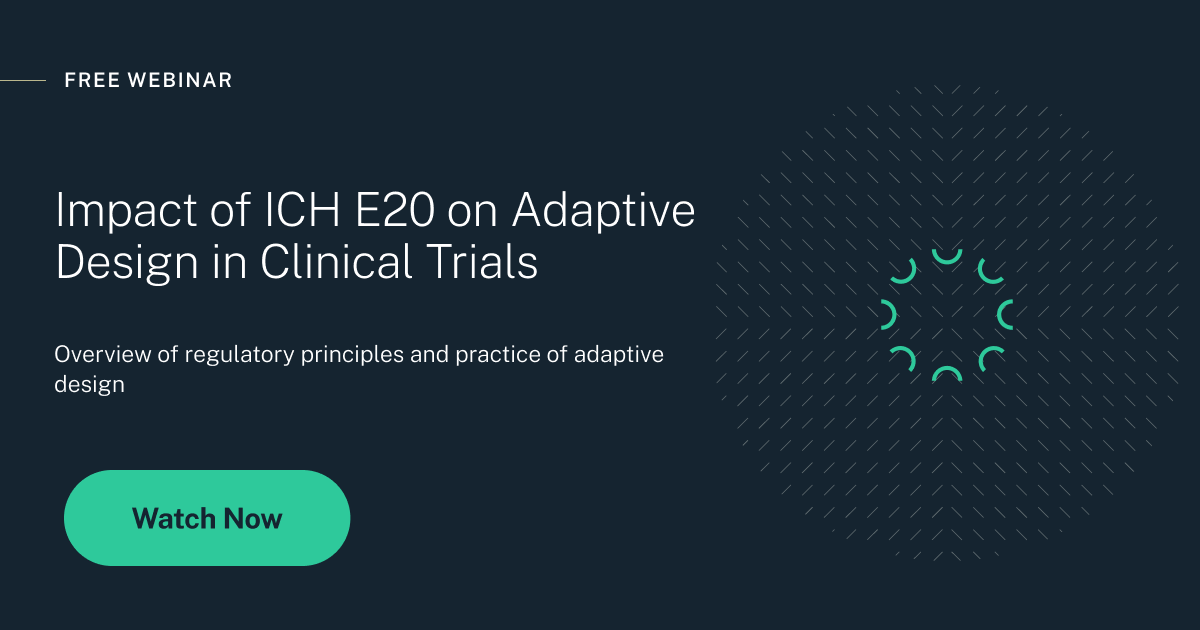Trial Design Issues for Phase II Trials
- Two Stage Phase II Design for Response and Toxicity (Bryant and Day).nqt
- Two Stage Phase II Design (Simon's Design).nqt
- MCP-Mod for Continuous Outcome (Common Variance).nqt
Trial Design Issues for Phase II Trials
Guide to Two-Stage IIa Designs and IIa/IIb using MCP-Mod
The process of getting a candidate treatment approved is a multi-phase process which takes multiple years, and requires millions of dollars to complete
Phase II is usually the first opportunity to test if a candidate therapeutic has a positive clinical response in humans and is also an opportunity to gain insight into the optimal dose for the proposed drug to be brought forward into a Phase III clinical trial.
However, Phase II is also the stage of the clinical trial process with the highest failure rate, so good study design is crucial to make informed decisions in a timely manner.
You will learn about:
-
An Overview of Clinical Trial Stages
-
Phase II Design Issues
-
Agreement Methods and Sample Size
-
Phase IIa/IIb Design using MCP-Mod
Trial Design Issues for Phase II Trials
Phase II clinical trials are (usually) the first opportunity to test if a candidate therapeutic has a positive clinical response in humans and is also an opportunity to gain insight into the optimal dose for the proposed drug to be brought forward into a Phase III clinical trial.
Phase II designs are often split into two distinct phases: IIa and IIb. Phase IIa, often called “proof of concept” trials, determines if an efficacy signal exists for the therapeutic of interest. Phase IIb, often called “dose-finding” trials, establish which dose(s) are of interest for Phase III study using dose-response modelling.
Two-stage designs allow for early futility stopping to ensure faster rejection of drugs with poor treatment outcomes and are very common in Phase IIa due to high failure rates seen at this stage. Two common two-stage designs used in Phase IIa trials are Simon’s Design and Bryant & Day Design.
Simon’s Design is a widely used two-stage Phase IIa design as it controls the Type I & II errors while searching over all designs for those that minimize either the expected or maximum sample size.
Bryant & Day’s design extends Simon’s Design by allowing for stopping for failure on a safety endpoint as well as for futility on the efficacy endpoint as per the Simon’s Design.
The Multiple Comparisons & Modelling (MCP-Mod) method is an increasingly popular approach to Phase II studies. MCP-Mod is an innovative method that enables the assessment of the dose-response curve to be carried out at the same time as testing for an efficacy signal.
This allows trialists to combine Phase IIa and IIb into a single unified approach and can provide crucial additional safety and efficacy data to inform the development of a Phase III trial.
Watch this tutorial, to understand the challenges in designing phase II clinical trials.
nQuery helps make your clinical trials faster, less costly and more successful with tools for sample size calculation - refining Frequentist, Bayesian & Adaptive designs.
Start your unlimited 14-day trial to help design efficient, informative and ethical adaptive trials.
Who is this for?
This will be highly beneficial if you're a biostatistician, scientist, or clinical trial professional that is involved in sample size calculation and the optimization of clinical trials in:
- Pharma and Biotech
- CROs
- Med Device
- Research Institutes
- Regulatory Bodies














